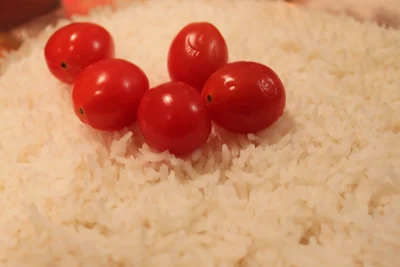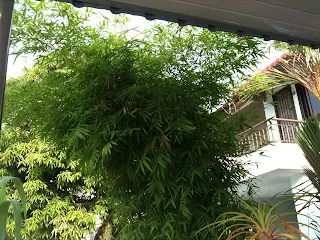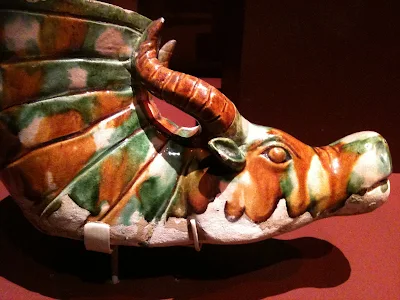When the throat is parched, and the palate longs for a sugary fix, with gobs of creaminess, consider the cendol dessert. This is also known as che banh lot in Vietnam. Both names refer to the squiggly green coloured crunchy yet soft strands you see in drink combinations all over Vietnam, Thailand, Singapore, Malaysia and Indonesia - and in some Asian cafes in the USA, Australia, New Zealand and Canada. Once you have fresh cendol strands made, you can have a free rein of choice as to what you next add - fresh or canned lychees, cooked red beans, grapes, nuts, ice cubes or shavings, light coconut milk, gula Melaka syrup, bits of black coloured jelly from Asian grocery shops and more. (above) The idea is to create texture, variety and compatibility for taste, presentation and bite.
Cendol strands are made with green pea flour soaked for at least an hour in water.
Concurrently do set aside sufficient time to prepare the liquid pandan leaf extract.
This can be an involved process involving cut leaf strips of fresh
pandan leaves to be liquidised in a blender, then set aside to be added with a tabelspoonful of alkaline lye water. (not more, as the lye water can be toxic in bigger quantities - lye is popular in very small dosages to be added in making Hokkien noodles and the like as well).
After an hour, mix both portions into a saucepan for controlled simmering - with continuous stirring and conscious flame size control - until you obtain a transparent glazed look and thickened shiny surface (above).
Always ensure not to overcook this resulting dough mixture.»
Now comes the fun part - with a firm but small potato presser, press the cooked dough mixture (above) through a wooden or aluminium cendol-maker frame, with quick short strokes into a basin ideally just six inches or 15 cm below and filled with iced water - this recommended distance will prevent the resulting cendol strands from becoming too long.
Allow for the resulting strands to rest in the iced water basin for around ten minutes.
Below, the gula Melaka syrup is freshly made by simmering the palm sugar cubes with water and flavoured with cuts of pandan leaves.
Above, the residue remaining after filter straining the liquidised pandan leaves.
Below, all ready for making the dessert combinations according to your taste.
Best served chilled and get the participation of your guests in making the final serving.
Thank you, Marta!

































